When describing the shapes of Perry Maxwell’s greens, writers tend to reach for metaphors: “scallops,” “saucers,” “potato chips.” For decades, the most popular of these terms has been “Maxwell Rolls,” which refers not only to Maxwell’s rolling contours but also to their Rolls Royce-like quality.
Another point in favor of the phrase “Maxwell Rolls” is its accurate implication that Maxwell preferred ridges to tiers. That is, his contours often slope both up and down, both left and right, sorting incoming shots in two directions instead of just one. In this way, good strikes are rewarded as much as poor ones are penalized. Say there’s a pin on the far side of a Maxwell Roll that sits perpendicular to the line of play. If you come up short, your ball will check and trickle back toward you. But if your ball lands on the roll with proper spin and trajectory, the downslope will help it toward the hole.

The 14th green at Old Town Club, with its subtle parallel spines
Through overuse, however, “Maxwell Rolls” has become stretched in meaning. As historian Chris Clouser put it on Golf Club Atlas in 2006, “[Maxwell] used various types of contouring that I believe over the years have been lumped into this ‘Roll’ category. These would include swales, spines, and mounds in the putting surface.” Since these distinctive shapes make up some of the best greens ever built, they deserve a closer look.
Old Town Club’s homemade muffins
“The greens at Old Town were the most exacting, undulating, and subtle greens of any that Maxwell built. They were just so artistic in their approach of defending the hole regardless of how far the player hits the ball. They are a fine example of how to defend par and provide a challenge to the superior player in this day of 7,500-yard courses.”
– Bill Coore (quoted in Christopher Clouser’s book The Midwest Associate)
At North Carolina’s Old Town Club, Maxwell built several greens that revolve around lone interior mounds. Bill Coore, whose firm Coore & Crenshaw restored Maxwell’s design in 2013, described these as “little rises that look like someone just pushed them up from underneath with an air hose.” The club’s golf chairman Dunlop White simply calls them “muffins”—an expression too charming not to steal.

The 17th (left) and 8th (right) pins at Old Town Club
Although the muffins in Old Town Club’s greens are eye-catching, they never look hokey or artificial. This is a testament to the skill of several people: Maxwell, obviously, but also his brother-in-law and construction supervisor Dean Woods and the restoration team led by Coore & Crenshaw, which included shapers Dave Axland and Keith Rhebb. The contours they crafted are subtle and irregular, and could easily be mistaken for the work of nature.
The strategic virtue of a Maxwell muffin is that, in one fell swoop, it creates four pin positions: front, right, left, and back. Each of these positions suggests a different mode of attack. For instance, a pin left of the mound may call for a left-to-right shot that could land softly into the side of the hummock. A back pin, on the other hand, may reward a low, running approach—one that doesn’t risk spinning off the front of the rise.
The closer you get to a Maxwell muffin, the tougher it becomes to negotiate. Chips and putts from one side to another have to be struck precisely, as the hump will amplify any mistakes. Slight misses left and right will travel farther in those directions, and misjudged speed will bring the ball back toward you or send it accelerating away.
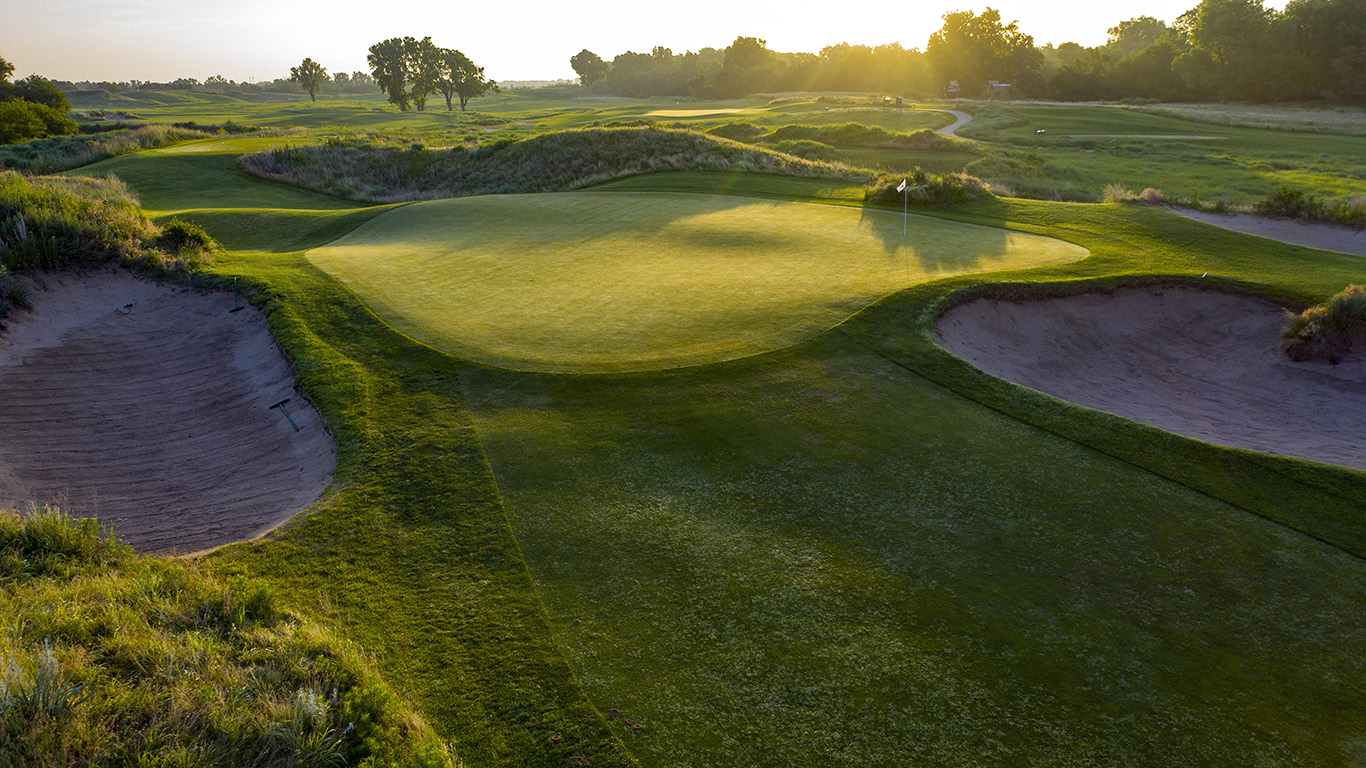
The 10th green at Prairie Dunes
On par 4s and 5s, these short-game challenges motivate more careful play back to the tee. When finding the correct section of the green becomes a priority, so does hitting the preferred portion of the fairway. It’s far more comfortable to attack a small target when you can see it, have a decent angle into it, and are as close as possible to it.
At Prairie Dunes, Southern Hills, and especially Old Town Club, Maxwell used sloping topography to define these preferred spots. Many of his holes traverse severe grades and have distinct high and low sides. Often the high side is difficult to hold and guarded by hazards but offers the best view of and angle into the green. The low side is safe and accessible but usually forces a long, blind second shot.
Into a flat green, high- and low-side approaches may not be hugely different. A Maxwell muffin, however, makes that difference more stark. A player on the high side of the fairway will have an easier time seeing the proper quadrant of the green, carving a shot into it, and avoiding the complications of chipping or putting over the mound.
Nos. 3 and 16 at Old Town Club are excellent examples of high-side/low-side Maxwell holes with greens dominated by a single interior hump. Each fairway sits on the side of a hill, its high side protected by a hazard (on 3, an intimidating bunker; on 16, a property boundary). Tentative drives kick farther down the hill, toward a blind position. Bold tee shots, on the other hand, hang higher on the slope, at about the same elevation as the green.
Yes, the lower, safer route on Nos. 3 and 16 may be the percentage play. But if your opponents manage to hold the high side of those fairways, they will have a better chance of avoiding the muffin on the green and making a birdie or stress-free par.
-
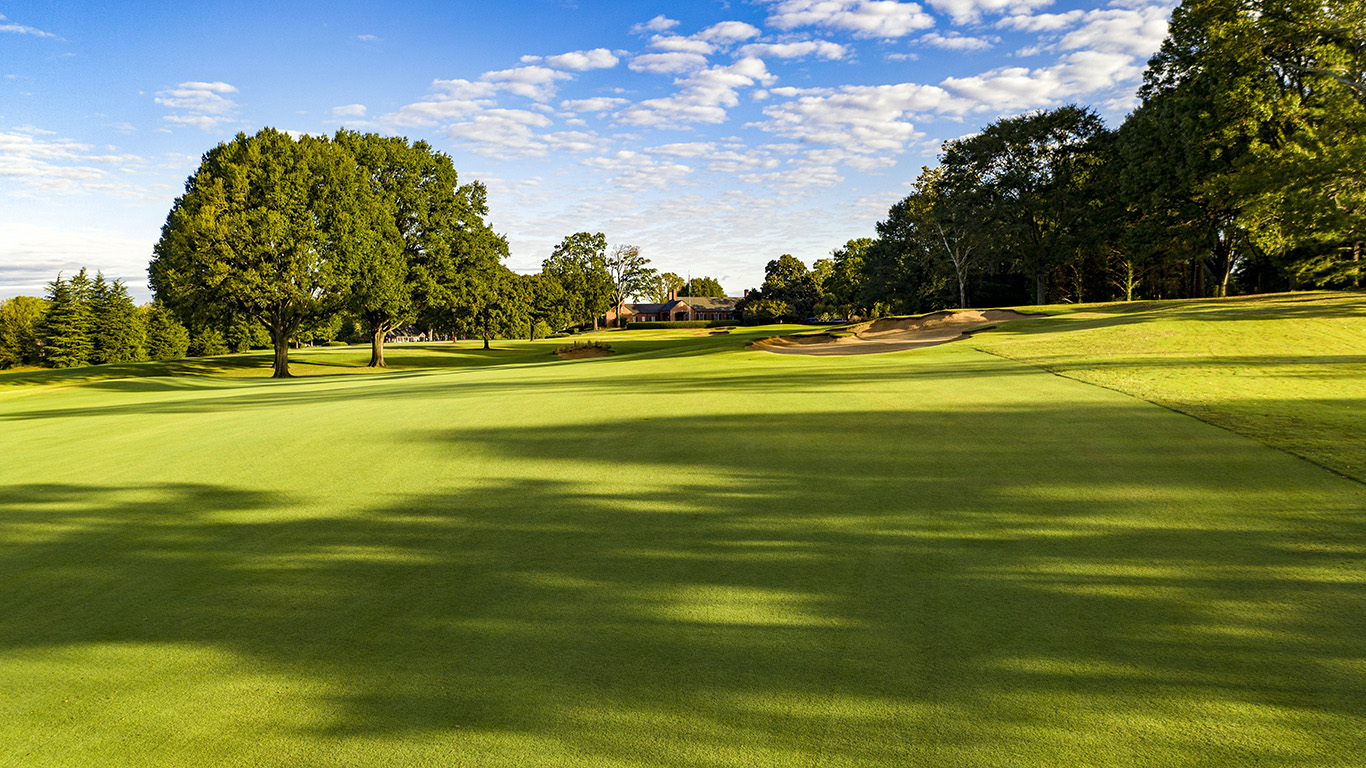
The 3rd hole at Old Town Club
-
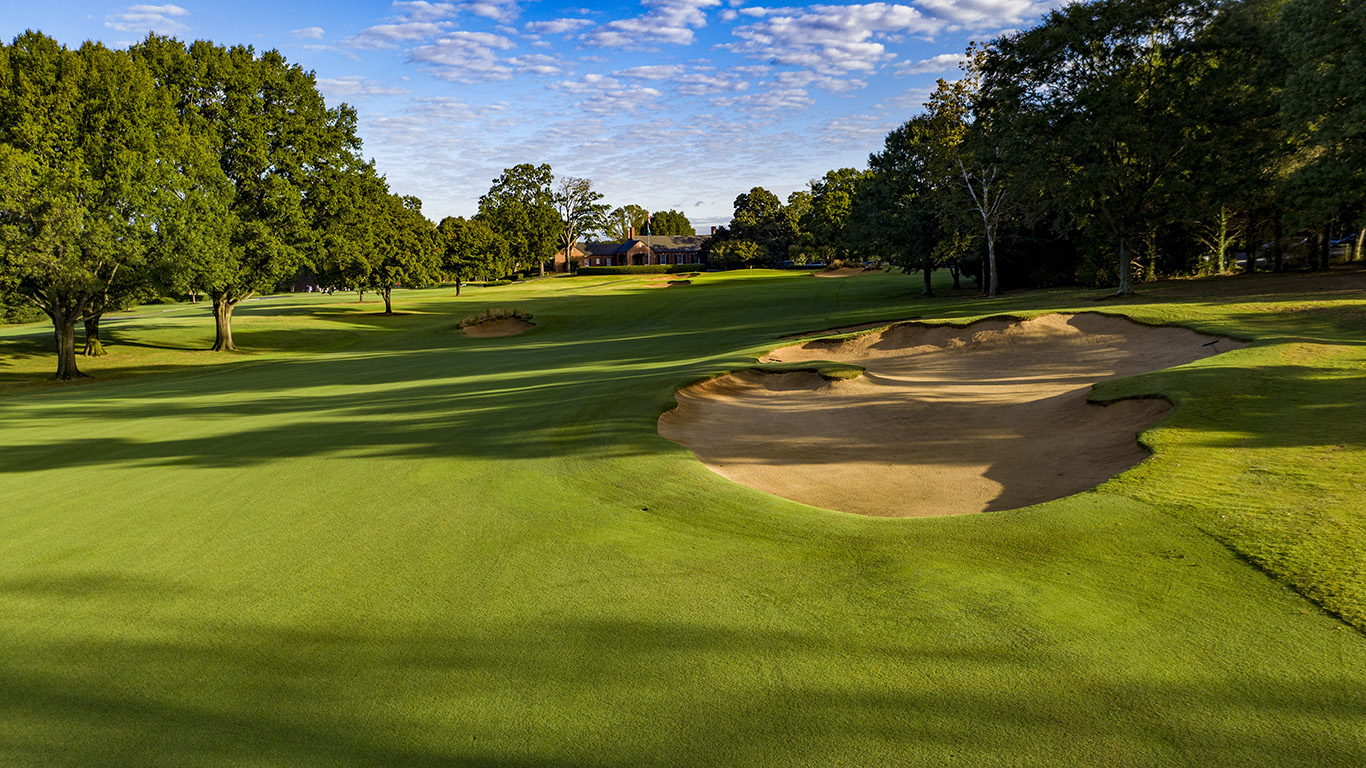
The 3rd hole at Old Town Club
-
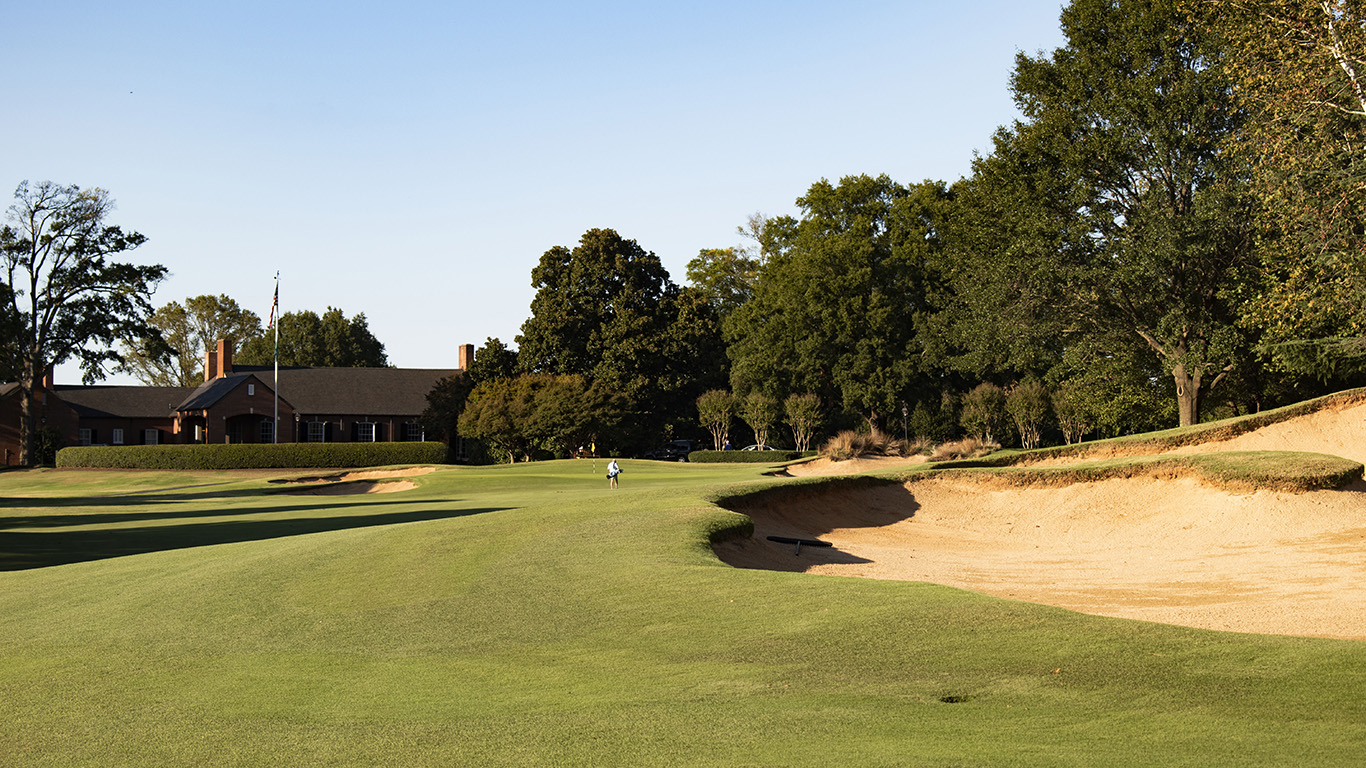
The 3rd hole at Old Town Club
-
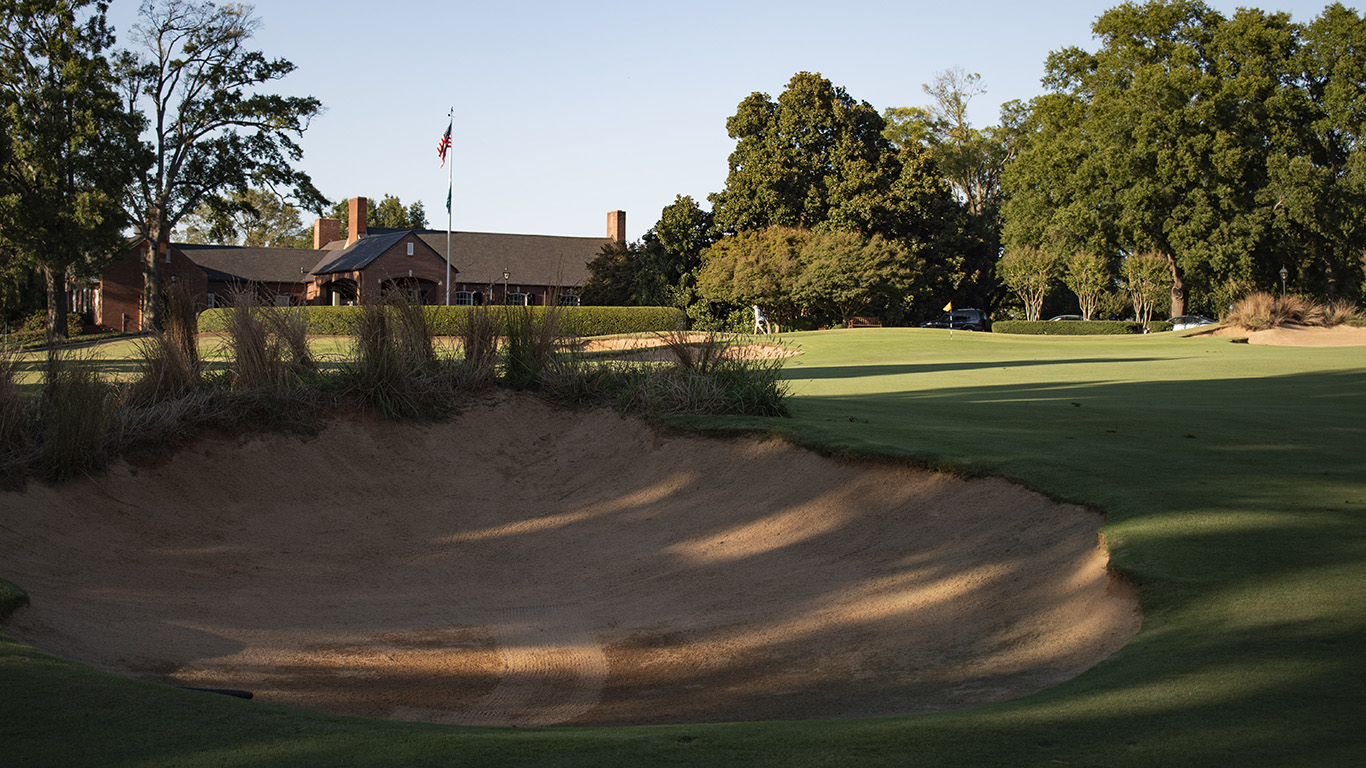
The 3rd hole at Old Town Club
-
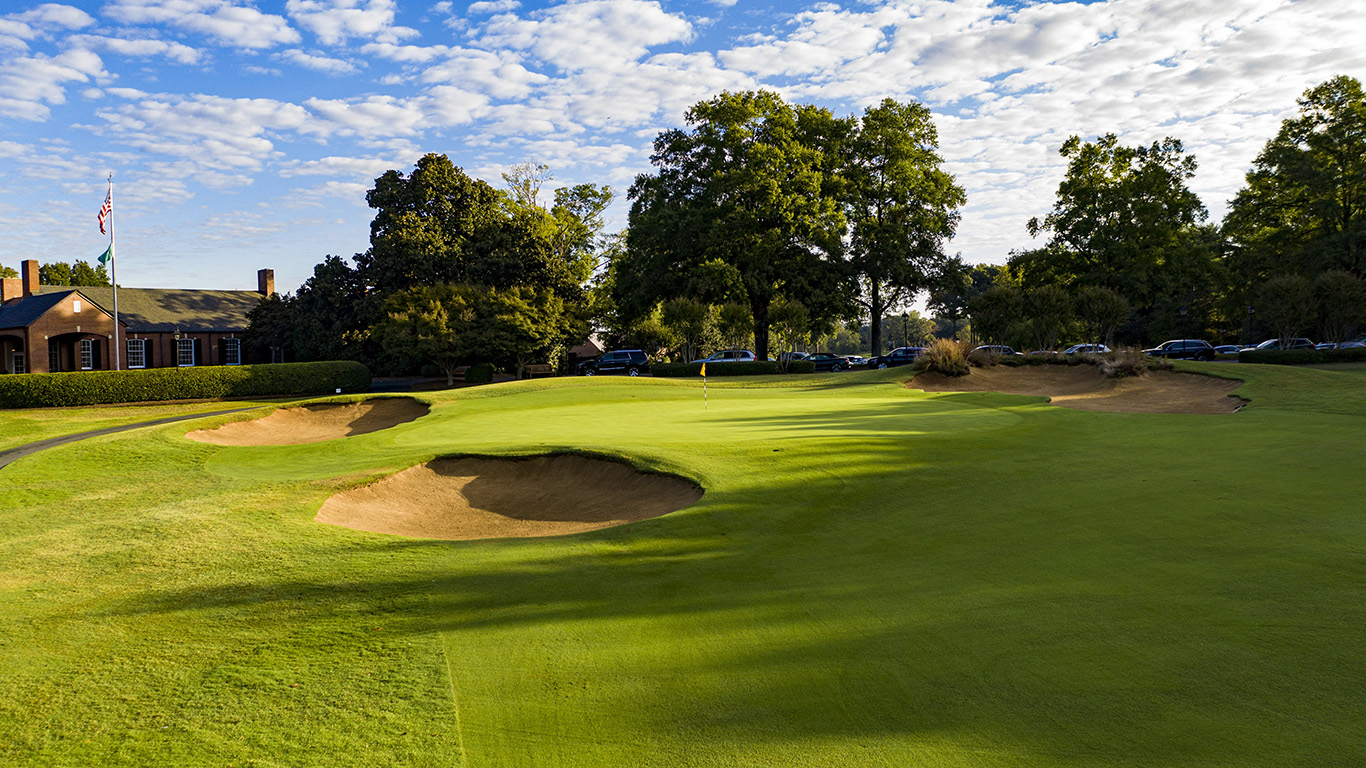
The 3rd hole at Old Town Club
-
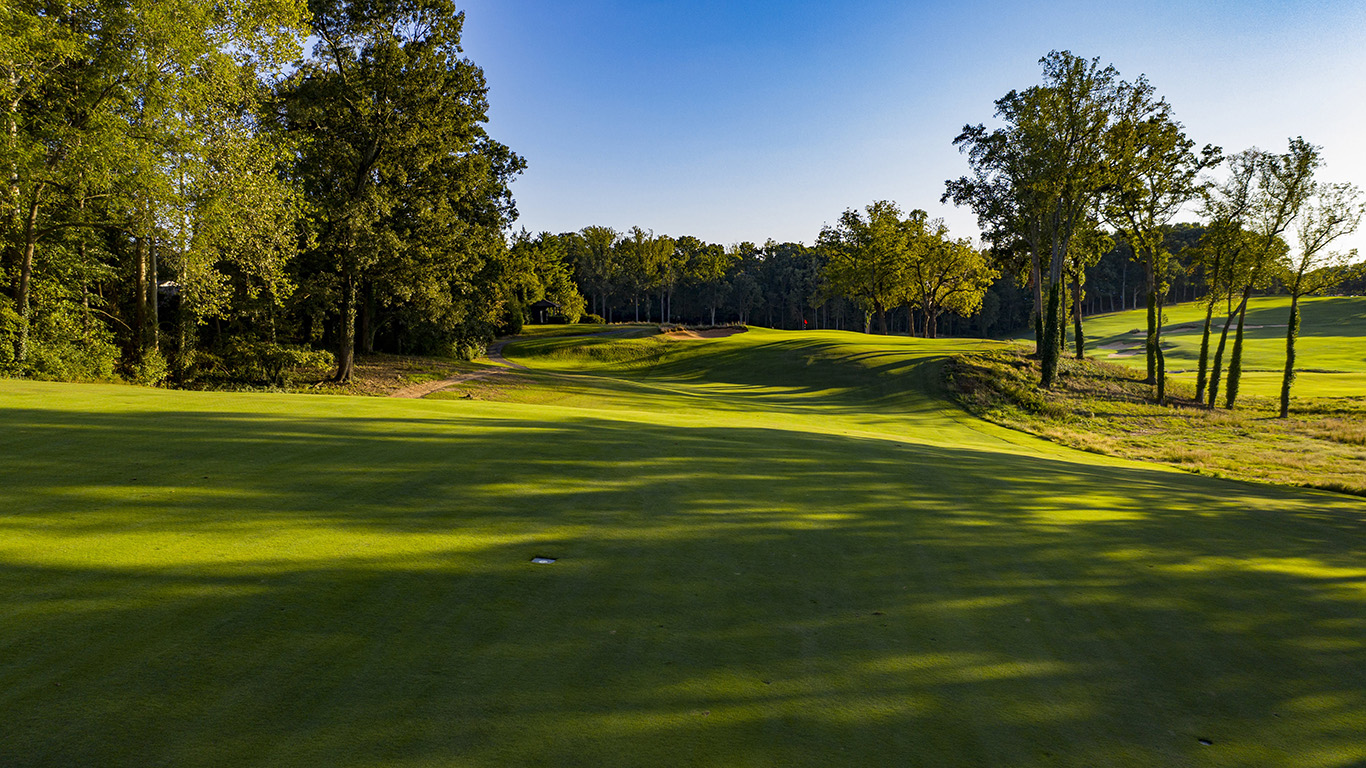
The 16th hole at Old Town Club
-
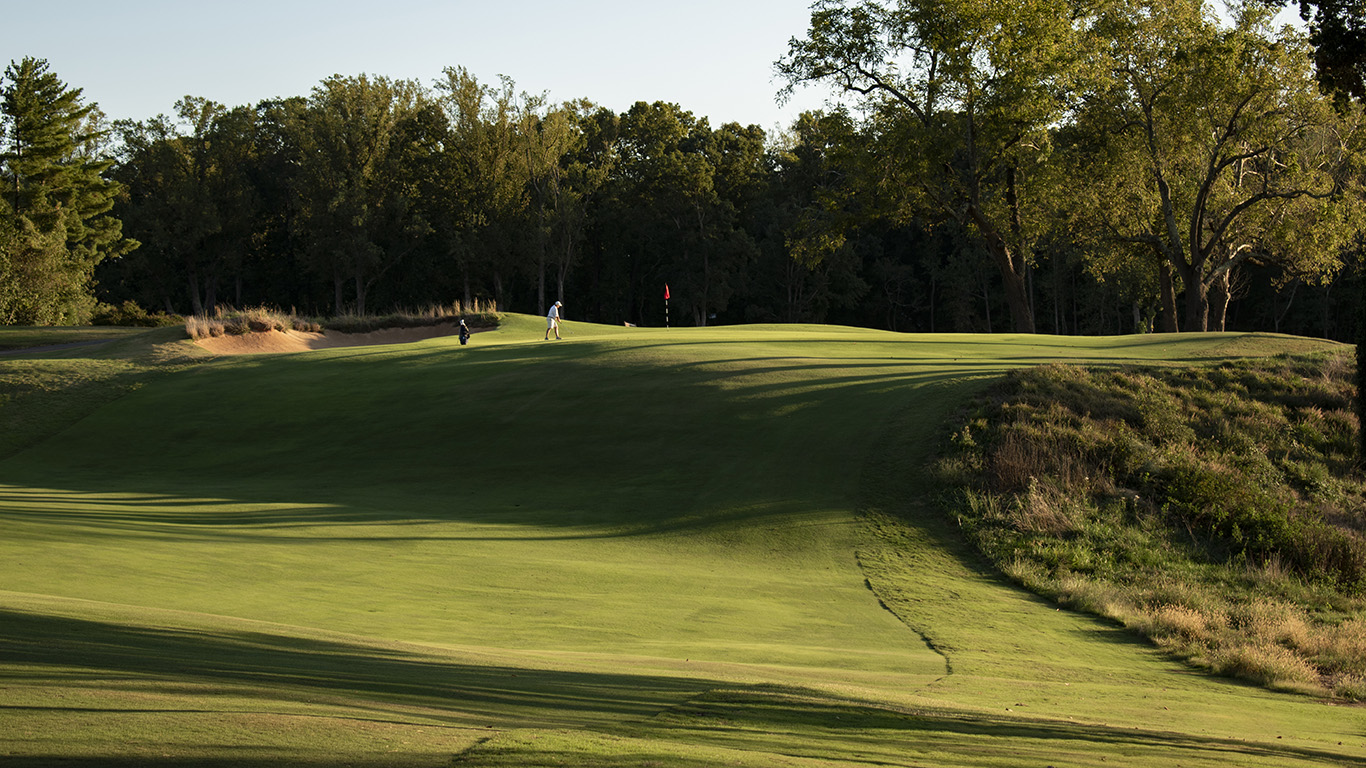
The 16th hole at Old Town Club
-
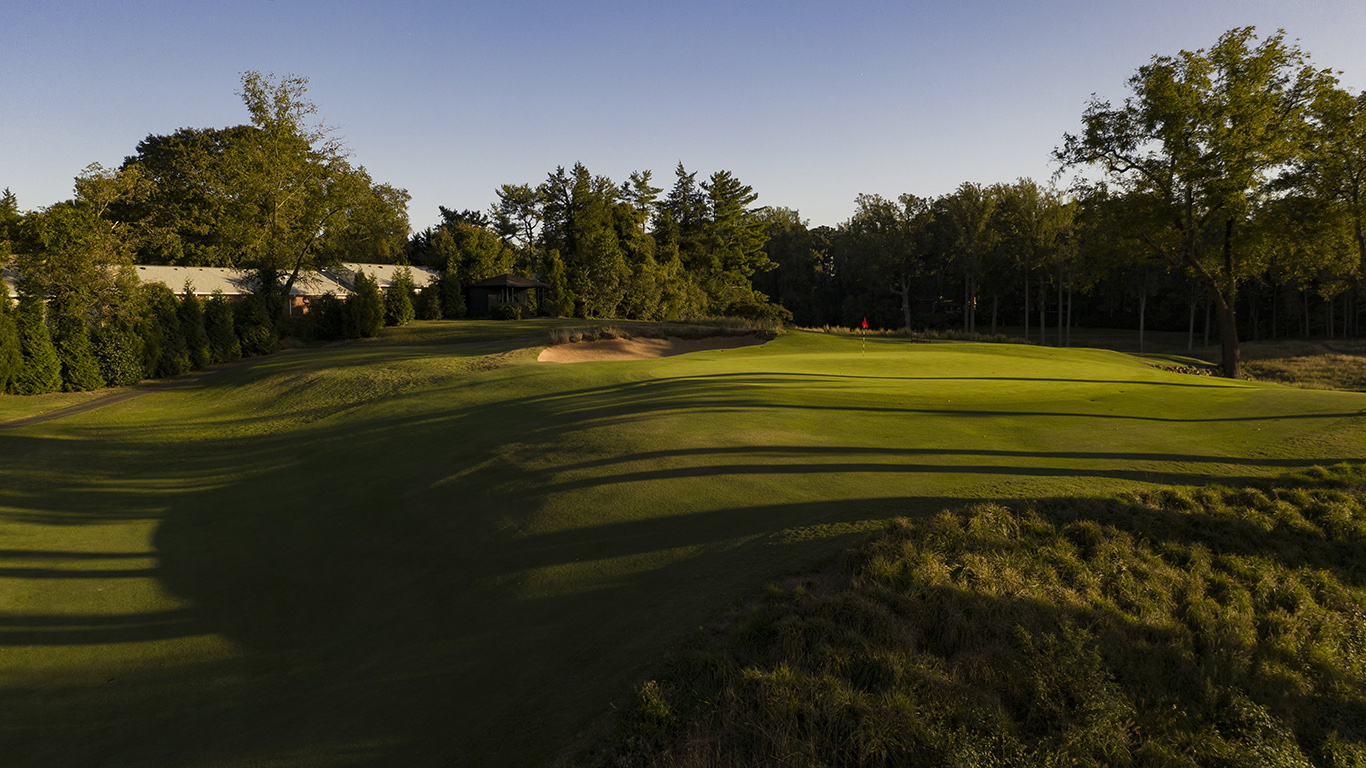
The 16th hole at Old Town Club
-
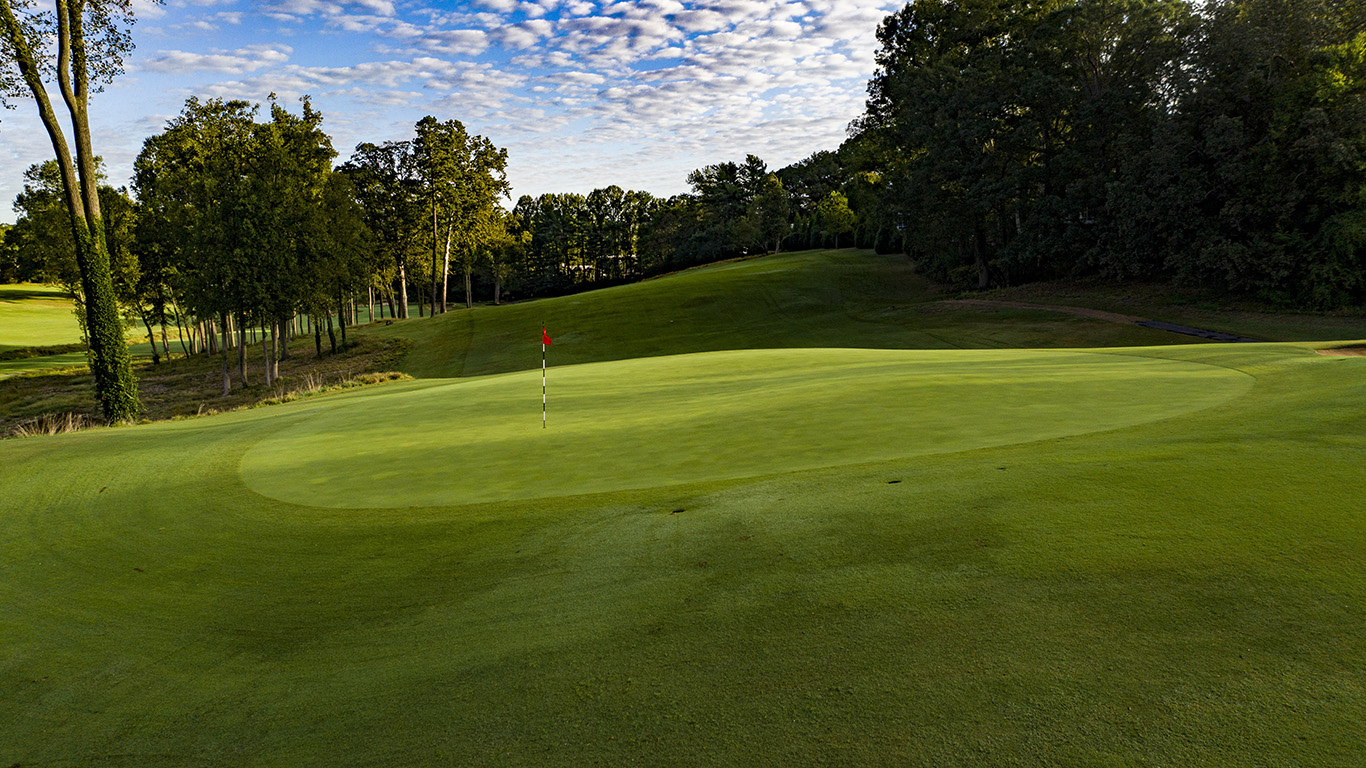
The 16th hole at Old Town Club
-
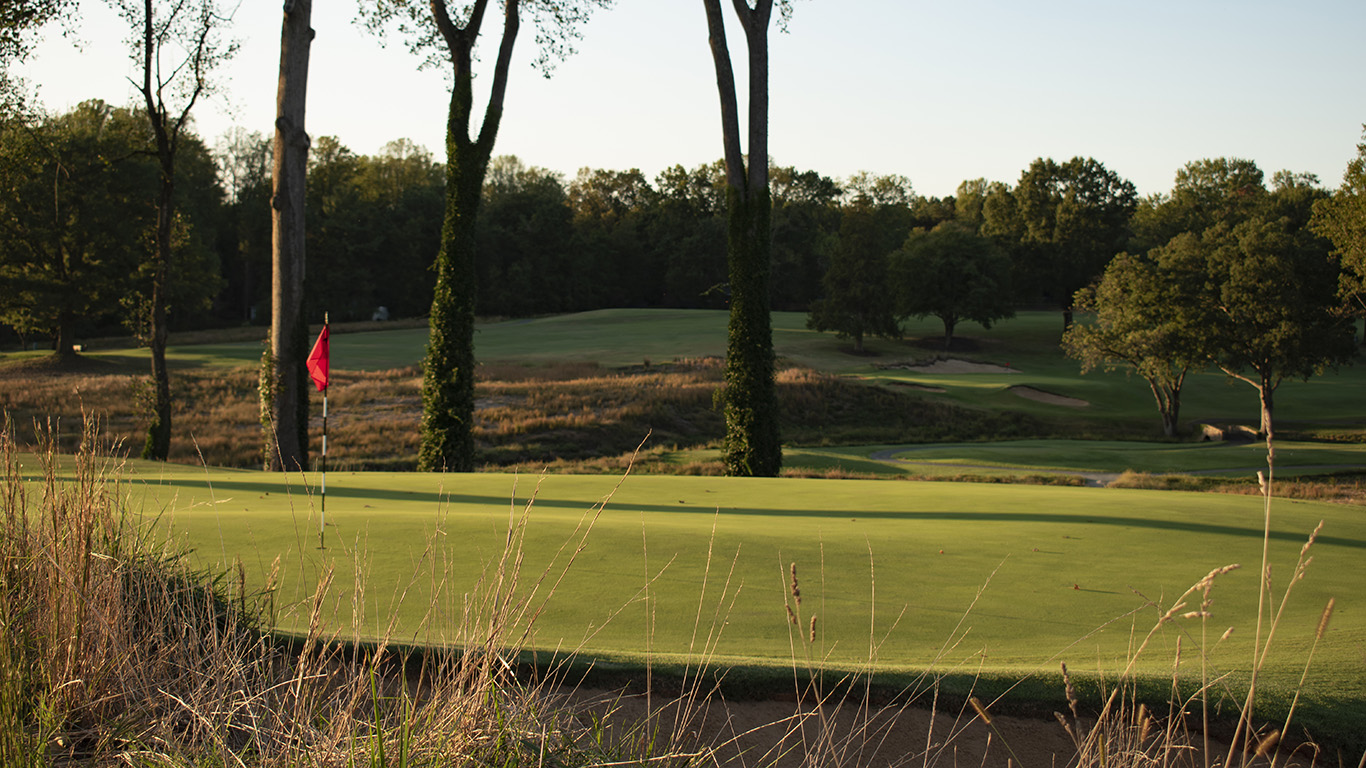
The 16th hole at Old Town Club
-
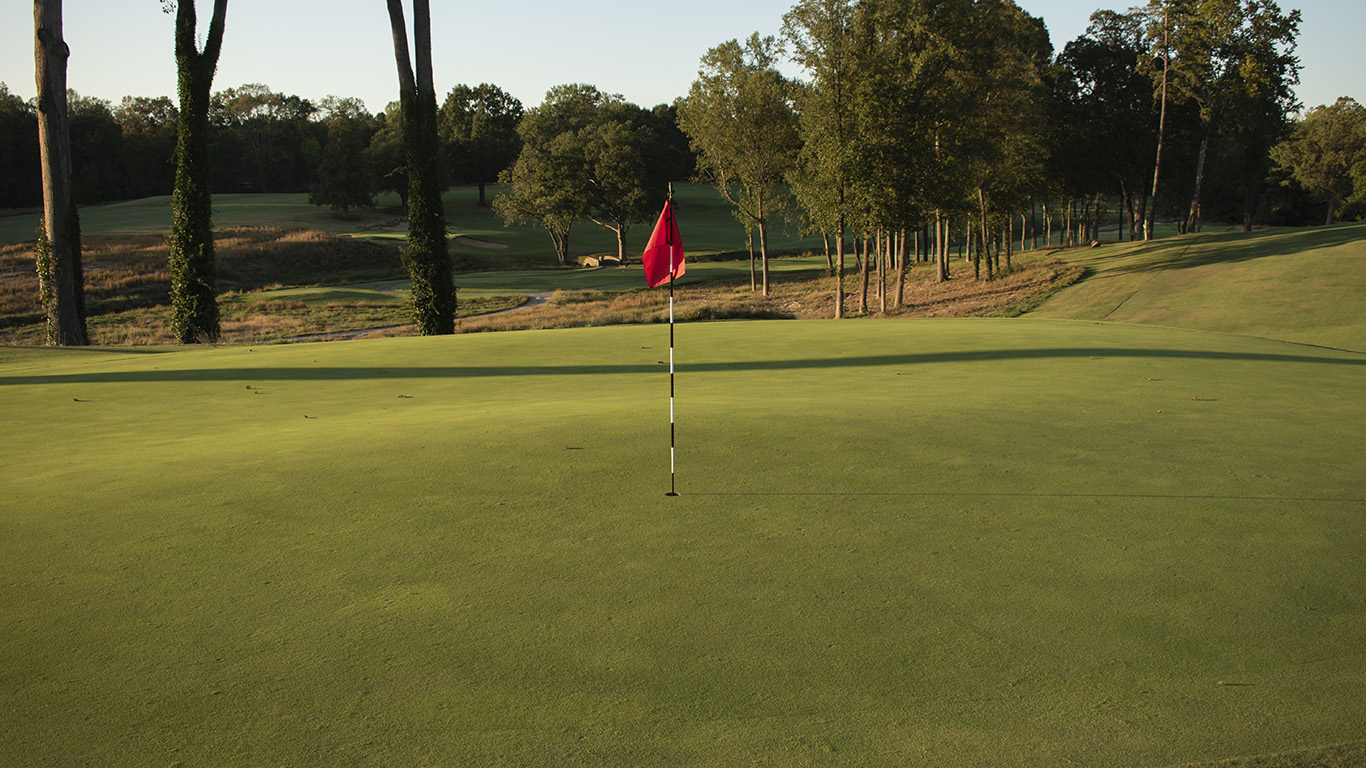
The 16th hole at Old Town Club
The (dying?) art of the simple green
What’s striking about this green concept is how simple it is, and how a lone hummock can generate such complexity.
It’s common nowadays for architects to chase strategic interest by building large, multitiered putting surfaces. This trend is understandable, especially as a response to an era in which machine maintenance caused many course’s greens to become oversimplified. Besides, the wild forms created by modern architects can be tremendous fun to play on—and to photograph.
Perry Maxwell himself didn’t shy away from intricate greens. See the crooked, inverted saucer of No. 1 at Prairie Dunes or the rumpled expanse that contains pins for Nos. 8 and 17 at Old Town.
-
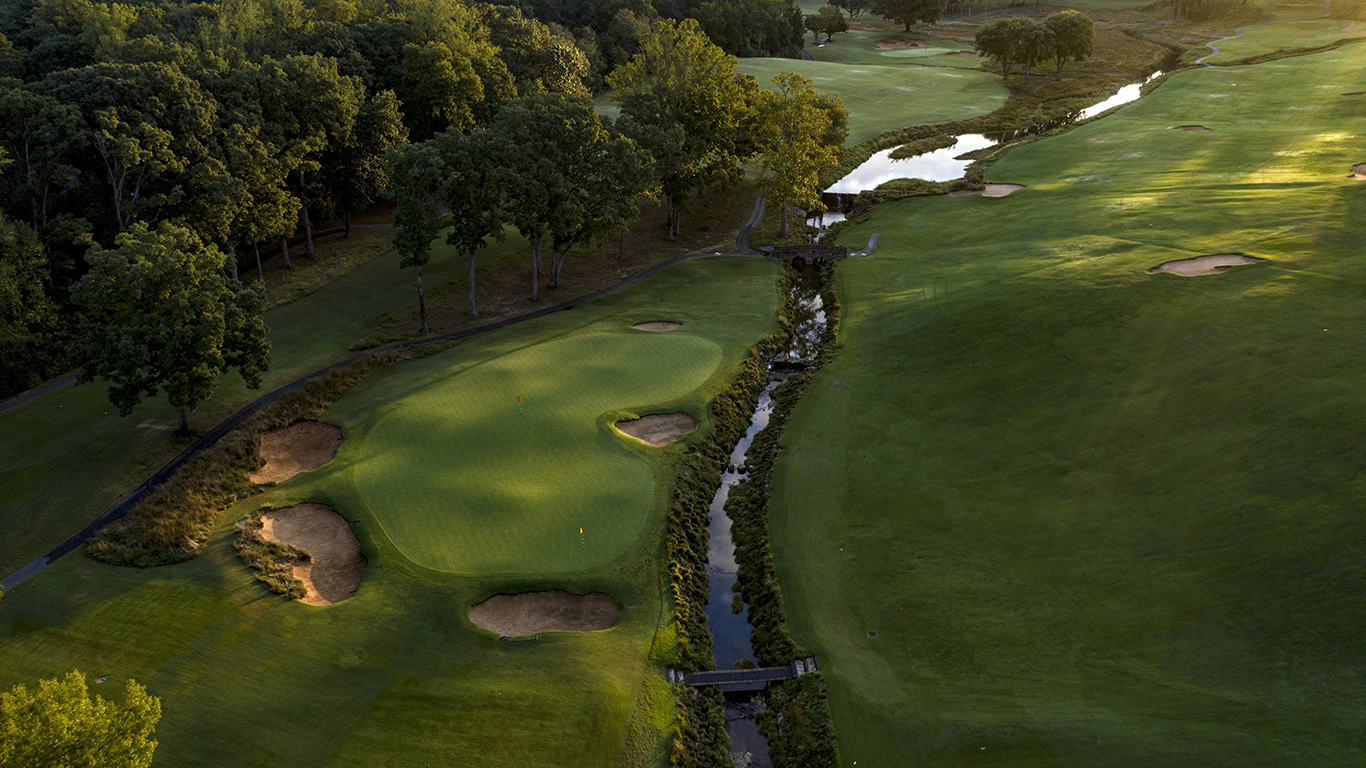
The double green for Nos. 8 and 17 at Old Town Club
-
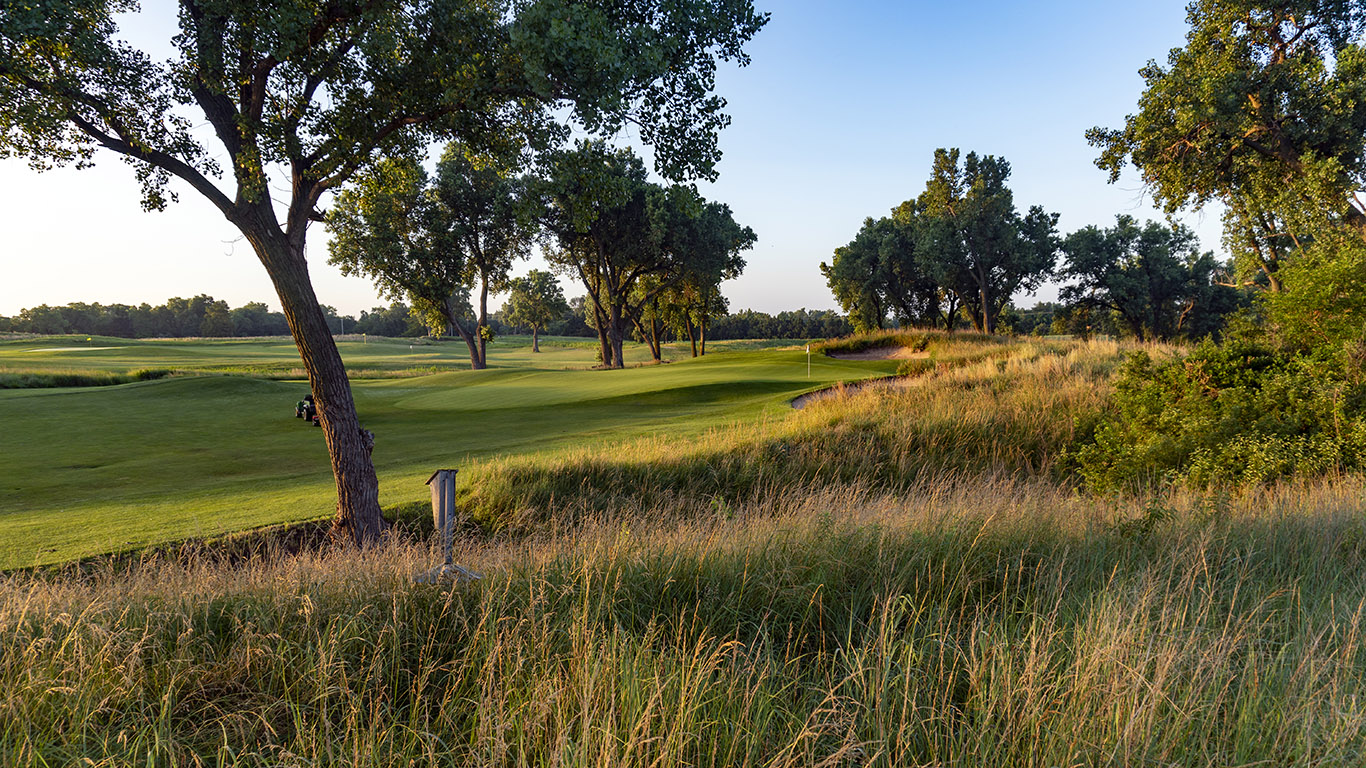
The 1st green at Prairie Dunes
But Maxwell was also capable of keeping things simple. At Old Town, many of the greens—particularly Nos. 3, 7, 10, 14, and 16—are smallish, understated, and defined by a single contour like a swale or a spine or a mound. These greens reflect Maxwell’s quiet confidence as an architect. They produce more than enough challenge and variety, but they aren’t trying to dazzle. They aren’t begging for praise.
When every green on a course is bigger and crazier than the last, the effect wears thin. It’s like having a four-course meal for breakfast. On occasion, with a Bloody Mary or three, it’s fun. Eventually, though, you begin to crave the wholesome simplicity of a single muffin.
For golf fans who want to bring home a piece of this course, we offer a collection of Old Town Club photography prints shot by the Fried Egg Golf team available in our Pro Shop.


 by
by 
